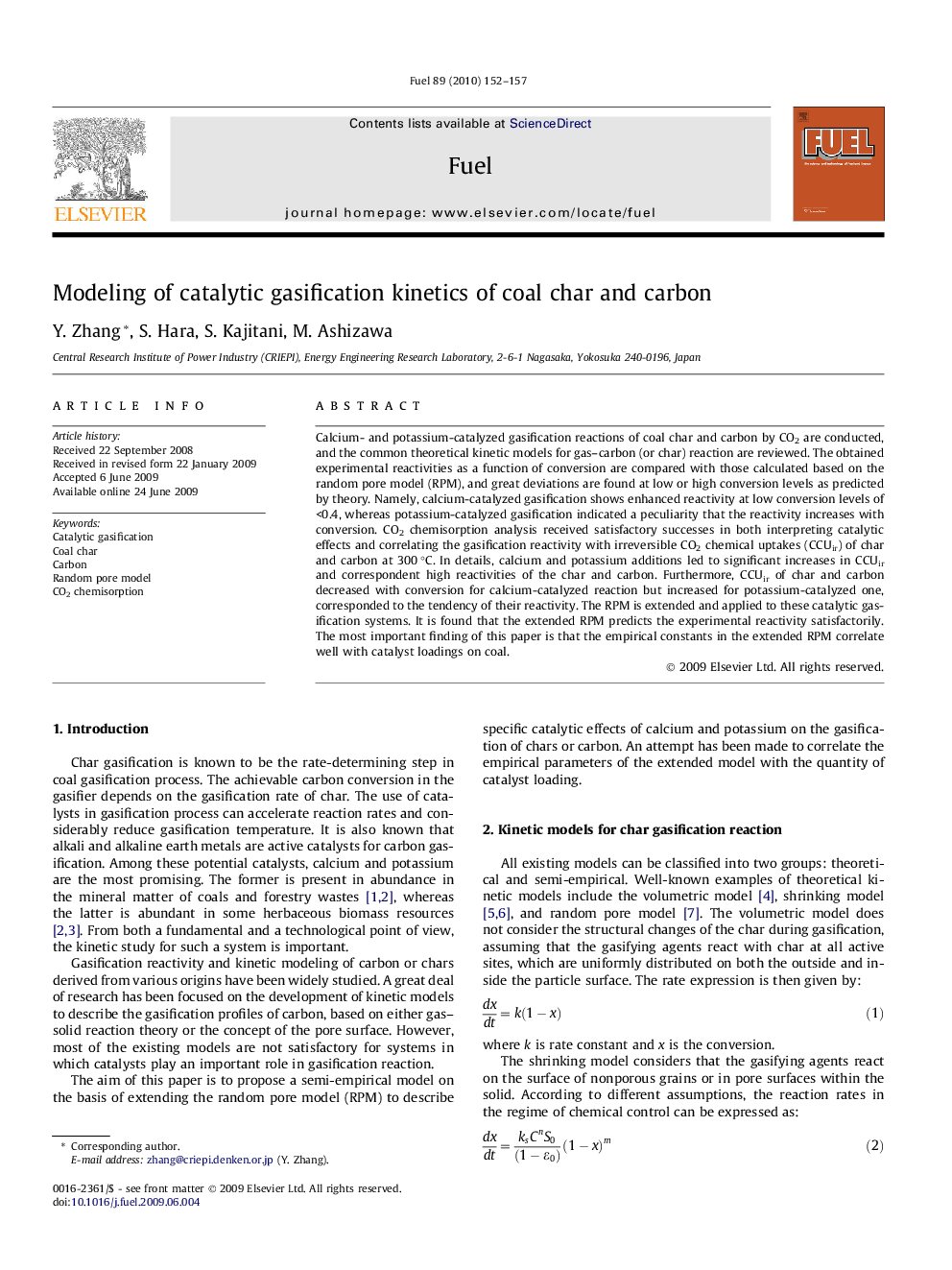| Article ID | Journal | Published Year | Pages | File Type |
|---|---|---|---|---|
| 206807 | Fuel | 2010 | 6 Pages |
Calcium- and potassium-catalyzed gasification reactions of coal char and carbon by CO2 are conducted, and the common theoretical kinetic models for gas–carbon (or char) reaction are reviewed. The obtained experimental reactivities as a function of conversion are compared with those calculated based on the random pore model (RPM), and great deviations are found at low or high conversion levels as predicted by theory. Namely, calcium-catalyzed gasification shows enhanced reactivity at low conversion levels of <0.4, whereas potassium-catalyzed gasification indicated a peculiarity that the reactivity increases with conversion. CO2 chemisorption analysis received satisfactory successes in both interpreting catalytic effects and correlating the gasification reactivity with irreversible CO2 chemical uptakes (CCUir) of char and carbon at 300 °C. In details, calcium and potassium additions led to significant increases in CCUir and correspondent high reactivities of the char and carbon. Furthermore, CCUir of char and carbon decreased with conversion for calcium-catalyzed reaction but increased for potassium-catalyzed one, corresponded to the tendency of their reactivity. The RPM is extended and applied to these catalytic gasification systems. It is found that the extended RPM predicts the experimental reactivity satisfactorily. The most important finding of this paper is that the empirical constants in the extended RPM correlate well with catalyst loadings on coal.
